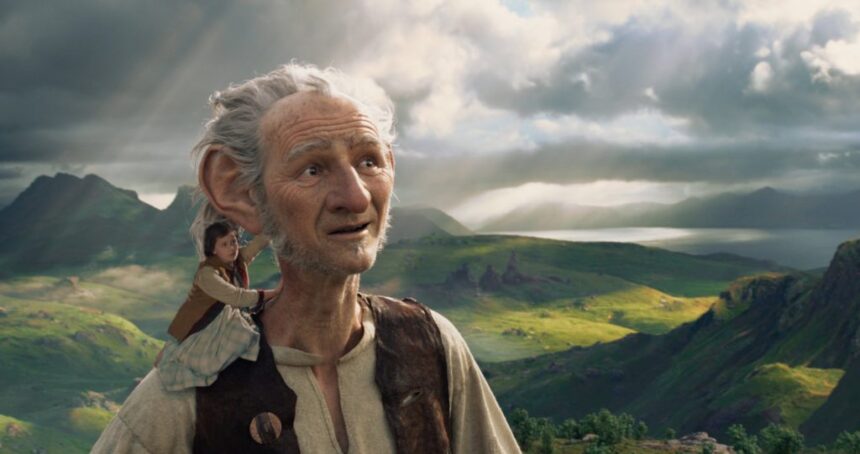
He hates snozzcumbers, but they’re better than eating human beans. Sometimes when he speaks, his words get all squiff-squiddled around. Since the world began, the Big Friendly Giant’s job has been catching dreams and sharing them with children by night, and July 1 “The BFG” brought his sweet dream of a story to theaters.
Director Steven Spielberg brings back Roald Dahl’s 1982 children’s classic in a story that smells strongly of folklore: Sophie, an orphaned girl, is swept away to Giant Country, a land of large vegetables and larger appetites (for human beans, of course). She befriends her captor, and they have magical adventures in the visual wonderland of Dream Country. But the other giants aren’t quite so friendly, and as is the nature of fairytale giants, they’re cooking up plans to make a Sophie stew.
The BFG and Sophie team up to defeat Fleshlumpeater and the BFG’s eight other ominously-named brothers with an adorable but unoriginal “Queen Elizabeth II ex machina” and a whizz-popping competition with the royal court (fanciful low humor from Dahl that must be seen to be believed).
While “The BFG” is light on plot, it doesn’t skimp on its cinematography — the $140 million budget allows not only for stunning views of trees teeming with luminescent dreams in Dream Country, but also for lengthy close-ups of the BFG’s face as he rediscovers the lost dream of friendship with the brave and bighearted Sophie.
A dream of companionship lies at the heart of the film: Sophie (Ruby Barnhill) and the BFG (a lovably large-eared Mark Rylance) build a friendship that lays two lonely hearts wide open as the expansive Vancouver scenery.
Though this “dreams come true” message could be dismissed as cliche, the BFG reaches more deeply, showing that the lasting reality of night-time dreams can feed our hopes in the daytime.
When Sophie laments the ephemeral shortness of dreams on a dream-sharing escapade, the BFG responds, “Yes, but they’re long on the inside.”
Dreams are doubly meaningful because they’re personal; the BFG’s favorite dream glows golden in its jar, taking the shape of Sophie, complete with her oft-misplaced glasses (cared for diligently throughout “The BFG” with endearing attention to detail).
Though his worst box office opening since the 1979 film “1941” (blame Fourth of July weekend and the splashing success of “Finding Dory”) must have hit director Steven Spielberg like a snozzcumber to the face, the film itself is the type of timeless fable that leaves room for small things to grow.
Despite its stunted earnings, the film is large on love: the BFG’s care for Sophie is so openhearted and unapologetic that their relationship takes a giant leap over sticky-sweet sentimentality, landing itself in the realm of all things perfectly “scrumdiddlyumptious.”
At a stately breakfast before their final confrontation with the BFG’s brothers, the Queen quips that all those snozzcumbers (stinky “vegeterribles” though they are) “didn’t stunt his growth.”
The towering BFG may have big fingers and a bigger appetite, but his dreams are the biggest of all.
Much like the dreams he shares with viewers, the BFG will take his time to sneak into the imaginations of his audience. Steven Spielberg’s gorgeous, big-hearted fable will plant itself in viewers’ hearts, take root and grow.

